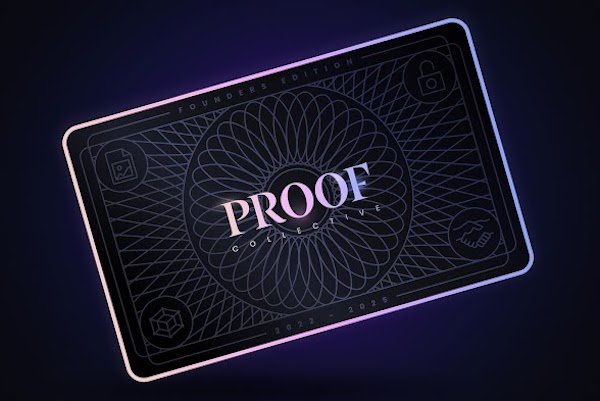- Proof -- best known as Kevin Rose's brainchild and the force behind Moonbirds and Oddities -- just wrapped up 'Future PROOF,' a live-stream community event with a focus on what's next for the brand's ecosystem.
- Rose and his team shared what's on deck for the next few months of 2022, including support for its CC0 collections, updates on the forthcoming Moonbirds DAO, and Proof's third NFT collection: Moonbirds Mythics.
- Headlining the stream was an announcement on the collective's expansion -- driven by an additional $50 million in funding -- and early plans for Proof's very own token. The kicker? It will be driven entirely by utility.
Why it matters
Without a doubt, Proof and Proof Collective (a subsidiary of the larger Proof brand) are two of the biggest names currently active in the NFT space. Beyond their success with Moonbirds, PROOF has also successfully stewarded other successful projects, like Grails and Emotes.
Additionally, members of the Collective have taken on the lofty goal of being stewards of the NFT sp
ace as a whole through the process of curation. As mentioned by Co-Founder Kevin Rose during an April episode of the nft now podcast, in "the stock world, there are professional organizations that do nothing but gather data and create really in-depth research reports. We want to be that for NFTs."
But there just might be two big obstacles standing in the way of all of that: the bear market and bad actors in the space. A May 2022 phishing attack saw one of PROOF Collective's members lose an estimated $1.5 million in NFT following a mistaken click of a link.
As such, Rose, PROOF Collective co-founder Justin Mezell, and Director of Product Harri Thomas took to the hour-long live stream to assuage some of those concerns. To maintain its forward momentum, Proof successfully raised $50 million in funding led by a16z.
"It's great to have this vote of confidence from some of the most respected investors in web3, as well as capital to keep delivering great products and services as we mature this business over the long term," said Rose during the live stream.
What's next
Proof also used the stream to comment further on Moonbirds and Oddities' recent shift into CC0 collections. Reportedly, "freeing IP" as characterized in the press release, "can lead to new creative endeavors and bring more attention to [NFT projects over time]." But what does this mean for Moonbirds, which currently stands as one of the best-selling NFT collections of all time?
That's where the establishment of the Moonbirds DAO comes in. The DAO is set to take charge of "granting trademark rights and deploying capital to projects that further the Moonbirds mission," as per the press release. Said capital will receive initial funding from Proof itself, in addition to ongoing funding from royalties generated by the OG collection.
As a show of commitment to its highest-profile collection, Rose and co. also took the time to announce a follow-up to Moonbirds during the stream: Moonbirds Mythics. The new collection will drop sometime in early 2023, and will be a 20,000-piece PFP collection "with an eye toward giving back to original Moonbird and Oddities collectors."
Future Proof also lived up to its name with another forward-looking development: Moonbirds will be one of the first fully on-chain high-end NFT collections. With this move, the artwork for each Moonbirds NFT will be fully embedded into its smart contract. By transitioning away from off-chain storage, Proof hopes to "[make] Moonbirds accessible for generations to come."

Comments
Post a Comment